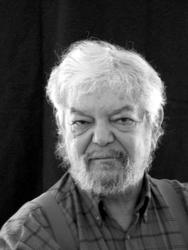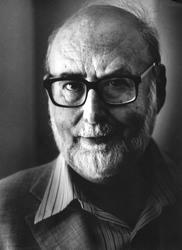
| Welcome | Research | Activities/teaching | People | Links |
The 2004 Wolf Foundation Prize in Physics

|

|
The prestigious Wolf Prize for Physics, 2004, was awarded to Robert Brout (left), François Englert (right) of the Université Libre de Bruxelles and Peter Higgs of the University of Edinburgh for their fundamental work in elementary particle physics.
This international prize was founded by Dr. Ricardo Wolf in 1976. In 1961, Dr. Wolf was appointed Cuban ambassador to Israel, which remained his adopted country after 1973. Five or six yearly prizes have been awarded since 1978 "to outstanding scientists and artists irrespective of nationality, race, color, religion, sex or political views for achievements in the interest of mankind and friendly relations among peoples". The ceremony takes place each year at the Chagall Hall of the Knesset building in Jerusalem.
The problem that was addressed by Brout, Englert and Higgs was the following. When their work was conceived in the early sixties, it was already appreciated that the fundamental tenets that governed intranuclear phenomena were amazingly similar to those used to formulate electromagnetism and gravitation. Yet, whereas the latter interactions extend to distances without limit, the former are extremely limited in range. Is it possible within a unified scheme to account both for their similarities and their differences?
Physics is the corpus of ideas which man has developed to attempt to give a complete quantitative description of all observed phenomena based on a minimum number of logically coherent principles.
The conceptual basis of this vast enterprise goes back to Newton some three centuries ago, wherein he proposed that matter was composed of tiny entities called particles that interact with each other.
At the present time, Newton's particles are what we call elementary particles. These come in a vast variety and they interact through various fundamental interactions. These are of two different sorts. The long range interactions of gravitation and electromagnetism act on particles no matter how far they are separated whereas the short range ones are only felt between particles when they are sufficiently close to each other. For example, radioactive forces extend out to somewhat less than 1% of the diameter of an atomic nucleus.
The theory proposed in 1964 by Brout and Englert, and independently by Higgs, showed that, albeit very different in range, all these interactions are based on the same logical principle, thereby offering the possibility to extend to short range forces the hitherto known laws governing those of long range.
It had long been known that the long range interactions were mediated by the propagation through empty space of a special class of particles, called gauge particles, which are emitted and absorbed by the interacting particles. Clearly if the gauge particle could only travel over a limited distance, the interaction would be of finite range.
The basic discovery of Brout and Englert in 1964 was that this limitation of propagation of gauge particles could be accounted for if empty space was endowed with a structure of a type that one encounters in material systems. Higgs used a similar approach. For example, a ferromagnet is composed of atoms each bearing a tiny magnet. When these magnets are lined up, the inside of the ferromagnet bears a strong analogy to the way empty space can be structured. Such structures both in material and elementary particle systems give rise to massy objects that under favorable circumstances would be detectable. Such is the "boson" which is being sought in present accelerator research.
Gauge particles that are sensitive to this structure of empty space can only propagate over a finite distance and thus mediate short range interactions. Those that are not sensitive to the structure propagate unhindered. They are responsible for the long range interactions.
In this way, it becomes possible to accommodate within a single unified theory both short and long range interactions. The successful standard model of elementary particle physics was so constructed subsequent to their discovery.
More generally, this theoretical edifice gives one the possibility of transcending this particular achievement. It provides for one of those few logical coherent principles that further our quest for the understanding of the world in rational terms.